This technology developed and became monetized to provide storage, security, and access services for millions of people who don’t have their own servers. Today, we’re diving into the business of image hosting and exploring eight of the best image hosting websites available now.
Table of Contents
- What Is Image Hosting?
- The Benefits of Image Hosting for Websites
- What to Look for in an Image Hosting Service
- Best Image Hosting Websites
What Is Image Hosting?
Fast forward a few decades, and now we have businesses that act as the school in my anecdote above. These are your image hosts, and you pay them to store and secure your images — which are just another form of data — then provide you with data access options.
These businesses have the physical servers — think gentle clicking, whirring, and tiny lights — in cooled storage facilities that are physically protected. They may be underground with controlled access so only certain people can enter the facility.
Then, there is the business’s website. This is what you see and interact with as well as upload your images to. The business makes sure that their website has its own security features, which adds another layer of protection for your data.
The business then stores your images on their servers. They then present you with options for accessing your data — in this case, images — in the form of code fragments or URLs.
The coding can even be inserted into third-party websites to activate a connection that summons your image to be viewed on the web page. The URLs bring users the other direction over the bridge to look at and/or edit your stored images.
In a nutshell, image hosting is a way to safely and privately store your original images, control if and where people can see your original images, then control who can access these original images to change them or share them.
You’ll never have to worry about losing your photos if your website crashes — or even if your host’s website crashes — because they’re securely backed up on servers.
Do You Actually Need Image Hosting?
It’s hard to imagine a business that doesn't need image hosting unless they are springing for their own servers, security, networks, websites, etc. Anybody who wants images on a website will want image hosting to achieve acceptable loading times, which I’ll touch on a bit later.
Beyond speed and its associated benefits, businesses generally have an interest in protecting their visual assets and providing secure yet ready access for their employees to use those assets. Image hosting makes this possible.
Let’s say your Los Angeles office and your New York office need to build print assets using the same branded image. Both would access the same, original, unchanged image stored on the image host’s server. They both use one source of truth to keep the national branding on-point.
Image Hosting vs. Photo Sharing
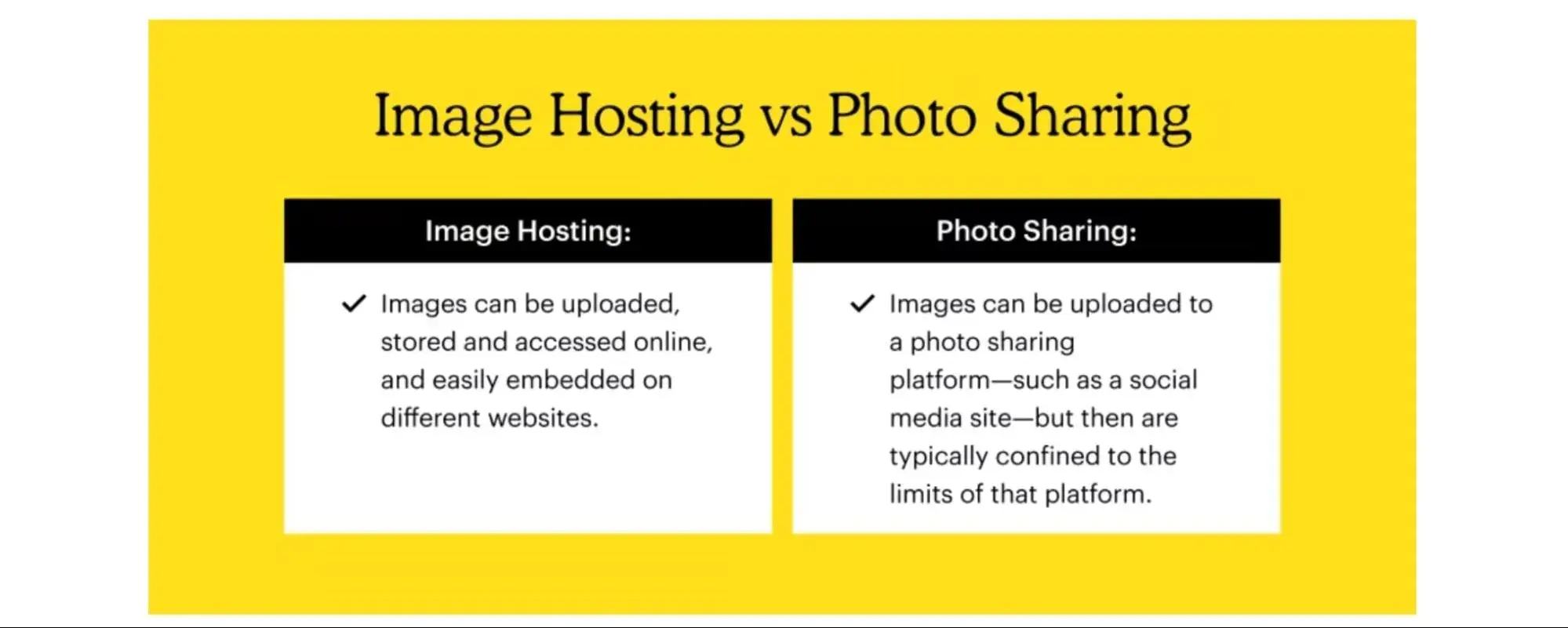
I think of photo sharing as something that happens on image platforms, like Flickr started out as, or social media platforms like Instagram. You upload your image on a specific platform and can easily share it there, sort it into an album, tag it, etc. and it feels native as long as you stay on that platform.
Trying to move that image off that platform to anywhere else, though? It takes several steps no matter how you slice it. That’s where photo sharing is limited in a way that image hosting is not.
In fact, only in recent history did Facebook and Instagram start overcoming that barrier under the same roof at Meta. We’re seeing the lines blur the other direction as well with Pinterest hosting the images you upload.
Today, you can tell Instagram to cross-post an image or video to Facebook. However, you can still run into problems transferring the music you’ve edited into that video on Instagram over to Facebook.
And yes, Pinterest hosts the images you upload, but there’s no reliable protection — anyone can upload an image that doesn’t belong to them. It can then be duplicated, circulated, edited, and re-uploaded without the owner ever even knowing it’s out there. Pinterest can shut down accounts for copyright infringement, but the system is ripe for abuse.
With image hosting, however, your images are smoothly summoned anywhere you use the image’s code or URL. This makes it super easy to share your original images anywhere you want, retain your rights to it, and keep it safe from being edited against your will.
With image hosting, you do not typically have the option to sort images into albums on the server, but the website that you upload your images to will offer a variety of features. Most offer an asset library that you populate with images, and you can then sort your images within it for easier management.
Free vs. Paid Image Hosting
Thus far, free image hosting has met all of my needs for a small business website, art portfolio, online professional packet, digital business card, and hobby websites. In fact, many of the website builders include a bit of image hosting in their free plans.
Past that, most of them increase their image hosting as you go up the pricing tiers. This is actually super helpful so that you have options as a business grows or a blog gets fuller and more popular.
Unsurprisingly, you get less when you pay less. Determining where you can afford to make functionality cuts can help you figure out if free hosting can meet your needs and which host to go with.
For example, a free image hosting website may insist on file compression — which fits more easily in their resource stack since they offer it for free — but can degrade the quality of your images. If you need sharp images to be zoomed in on or blown up large, you can’t cut there and need to find different hosting.
Free image hosting websites will generally cap your storage space, and often your bandwidth, which determines how much you can do at once or over the course of a month.
Paid image hosting offers more bells and whistles, fewer limitations, and most importantly — customer support. The more hosting or features you need, the more critical it is to be able to contact someone for help. Customer support is indispensable, for example, at the enterprise level.
The Benefits of Image Hosting for Websites
1. Speed
Storing images on your website itself negatively impacts your website performance. There’s simply less memory to go around. I’ve personally experienced that when you store those images — or files, or any type of data, really — on a website itself, it negatively impacts the processing time.
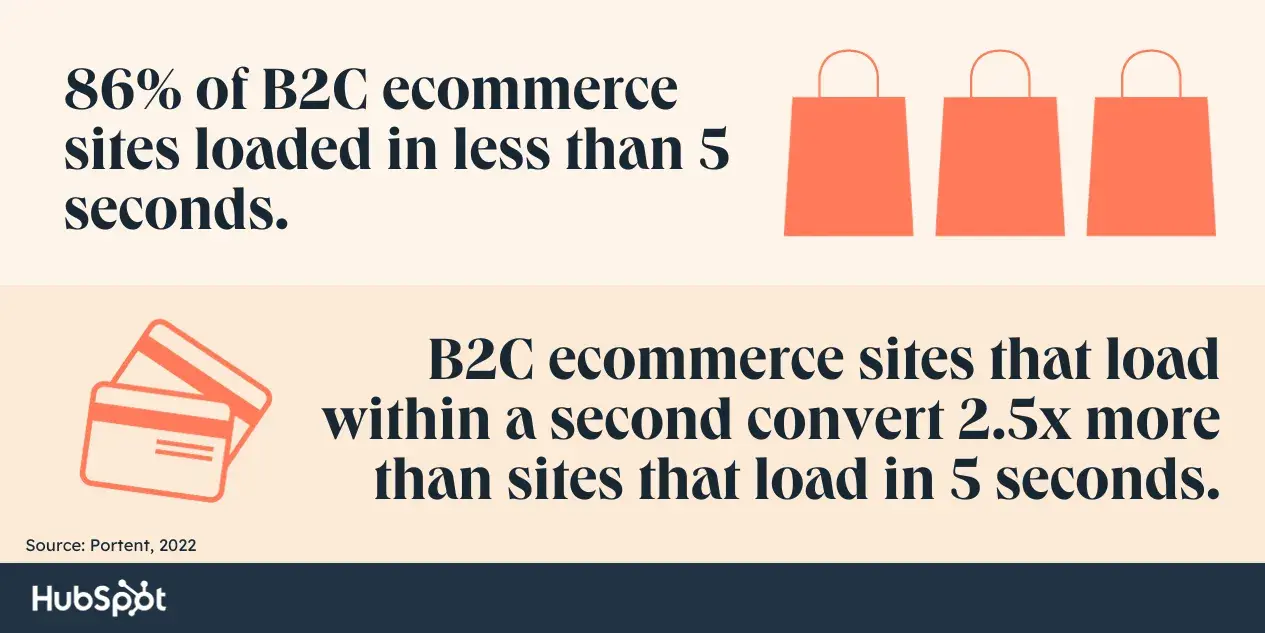
But when I brought that data in via a connection instead? All that memory became available to work, and all the bits of programming could run faster as a result. Boom: maximalized functionality and all images popped right up.
2. SEO
Next, you might ask why load time matters so much that you should shell out for hosting. I don’t need my website to be a Ferrari if I sell Toyotas. Well, cutting lag time is critical because lag time loses.
First, it loses your highest possible placement in the SERPs. Google shows a strong preference for websites that load quickly because they prioritize the customer experience.
This Portent study showed that the most impactful places on your website to slice your lag time are high-intent areas where the customer knows what they’re trying to accomplish. Examples would be the homepage where they land and want a first impression, and during checkout when they’re trying to pay and move on.
3. Trust = Profit
Lag time also loses you potential customers and your established customers’ trust — and thus brand loyalty — shaving away your profits bit by bit. If a brand doesn’t care enough about your time and experience and leaves you hanging, there’s often very little reason for you to hang on to them.
Waiting for a page to load feels out of touch and antiquated to me, like dial-up. I feel as though the business either doesn’t know what’s going on or doesn’t value my time if they’re willing to waste it this way when it’s no secret how they can optimize website speeds.
4. Efficiency
One of my favorite things about image hosting is that it keeps my geriatric laptop light and quick. Space on your computers and devices can stay free and available because hosting is like having an online hard drive that’s available whenever there’s a wifi connection you can hop on.
5. Security
You should look for hosting with the ability to set passwords, data encryption, and secured connections. If you have to use public wifi connections, it won’t be as disconcerting because you’ll know you have layers of protection between it, the website you are building, the hosting website, and the server holding your images.
6. Flexibility
What’s more, the individual contributors from your LA and NY offices mentioned above? They can build the brochures from anywhere in the world with an internet signal because they can access the host’s website to gain access to the company’s storage on the server.
What to Look for in an Image Hosting Service
1. Security
If it were me and security was a priority, it’d have to be my top priority. When security matters but is missing, the rest just doesn’t matter.
Look for encryption as well as password requirements. They should be proud of and advertise their security features. When security matters and the need is met, I’m free to consider the next aspect: storage size.
2. Storage Size
Now that I know they’ll be safe, an image hosting service has to be able to hold the number of images/amount of data I need stored. If my projects are growing, it may take some planning in order to be sure that the host can accommodate my impending needs long enough for the investment in their services to make sense.
3. File Types
Once I know they can handle the volume, it’s time to make sure they can handle the types of images I need to store. PNG are great for printing, JPG are better for sharing online, SVG are what my embroidery machine needs, etc. Learning more about your file types and how they work can help you optimize images for web speed.
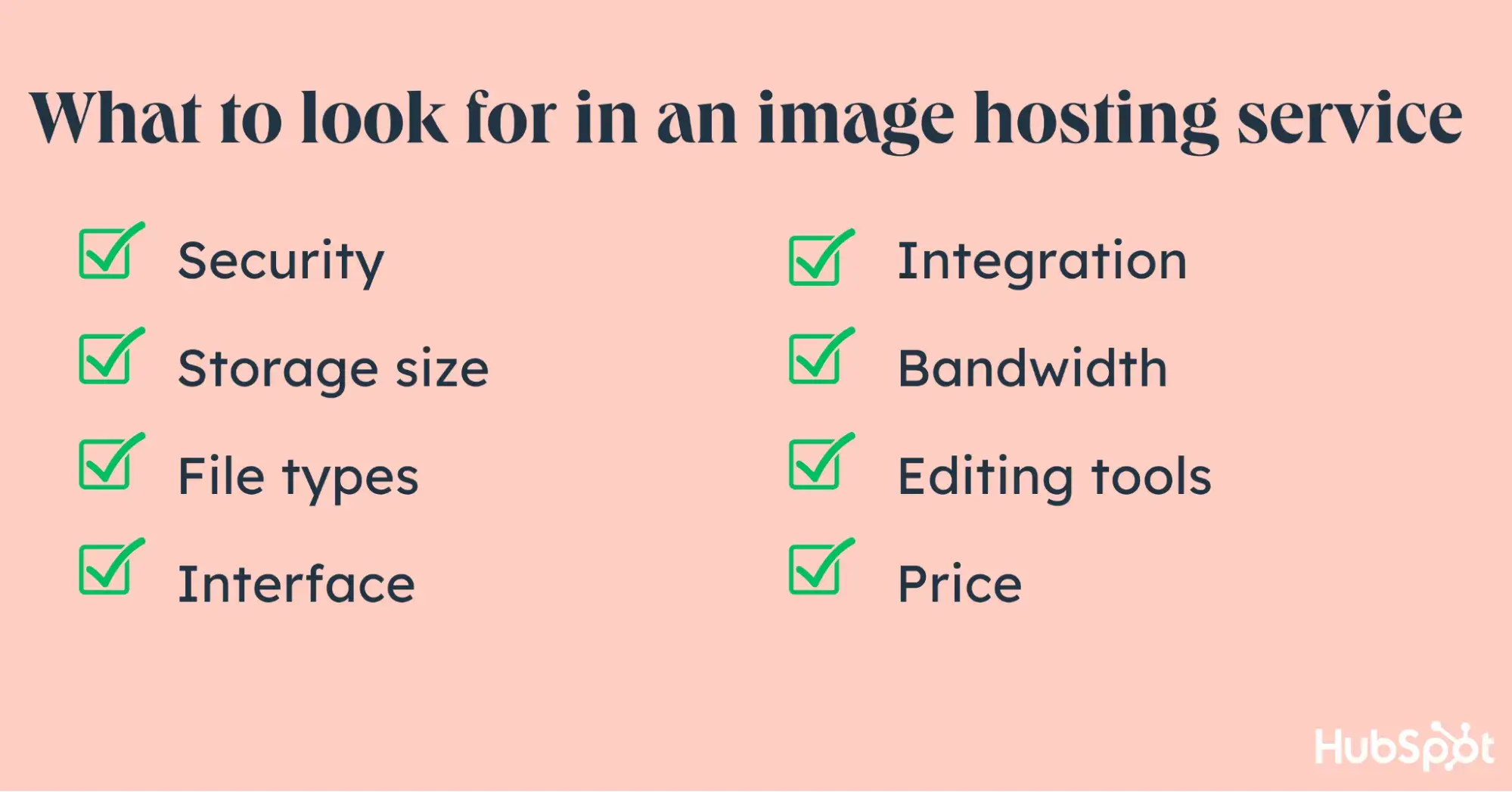
4. Interface
Is it easy to use? I’m not a coder anymore and really just need things to be user-friendly. Time is my most valuable resource right now, so I want to spend as little time as possible on learning curves.
5. Integration
Does it play nice with the programs I use? I don’t want to have to jump on one leg in a thunderstorm while singing a sea shanty to get an image I create in Canva onto the server.
And I definitely don’t want to have to learn Photoshop to get it there, either. If it doesn’t work with what I’m already proficient at using, it’s not for me.
6. Bandwidth
There are days I upload hundreds of photos because I do them in batches after product photoshoots. Can it handle a lot at once or do I need to be prepared to pace myself — or pay for more bandwidth?
7. Editing Tools
How much manipulation to my original images can I do natively on the host’s website? Do I even need editing tools if I have an editing program I like and can just upload it in its completed state?
If I didn’t have the editing program I needed, does the host offer enough tools? If your employees need easy access to editing tools, is what’s available enough for them — and not so much that it's overwhelming or requires costly training?
8. Price
Once I know something has the functionality I want and/or need, there are finances to consider. If my wants add up to a premium price tag, what am I, in my situation — or you in yours — willing to pay? Or do we need to pare down on desired functionality to lower the price and nail the budget?
Best Image Hosting Websites
Now that you know what to look for, I’ll share the eight best image hosting websites I found and why I like them.
1. Google Photos

This is funny — I went to try this out and apparently I already did in 2017. There are some spectacular photos in here of my son when he was tiny, in particular from a road trip to Charlotte, NC where he and my husband look like they recorded a hot new album together:

What a collab! So, everything here is super clean, clear, and self-explanatory. Most people know the drill with Google products, and a little poking around is all it takes.
I have the free 15GB but I would definitely need more if I were using this for photo dumps from my phone. For a small business, it’s probably enough to host what you’d have for a standard website with an assortment of product images.
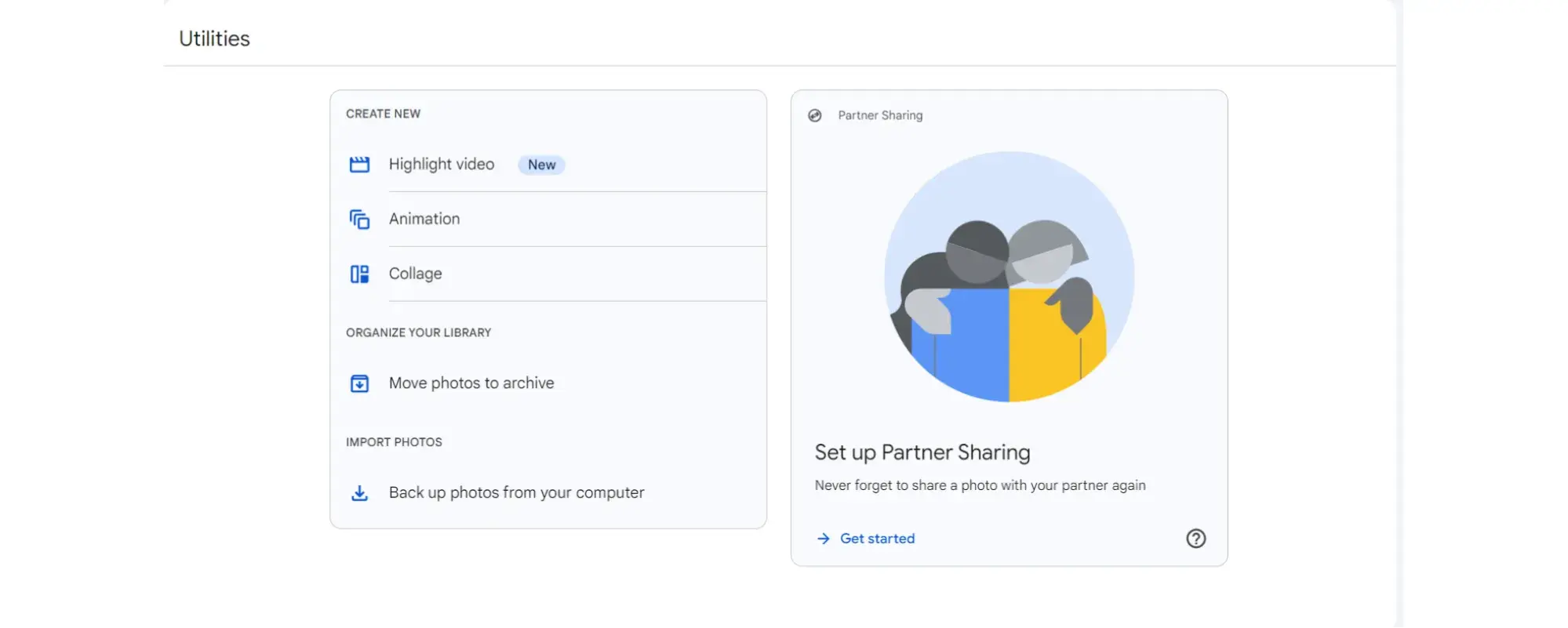
They offer photo printing, face recognition for sorting pictures by person, and the feature above — Partner Sharing. This is great because if you have people you take pictures with a lot, you are able to set this up to automatically share any images with that person if their face is in the photo. There are other parameters, too, so this can be a real time-saving feature.
Pricing:
- Free - 15GB
- Basic - $1.99/month for 100GB
- Premium - $9.99/month for 2TB
- AI Premium - $19.99/month for 2TB
What I like: Convenient, always at hand, already plugged into the products I work with daily. What’s not to love? Plus, the prices for buying more storage space and features are incredibly reasonable.
2. DropBox
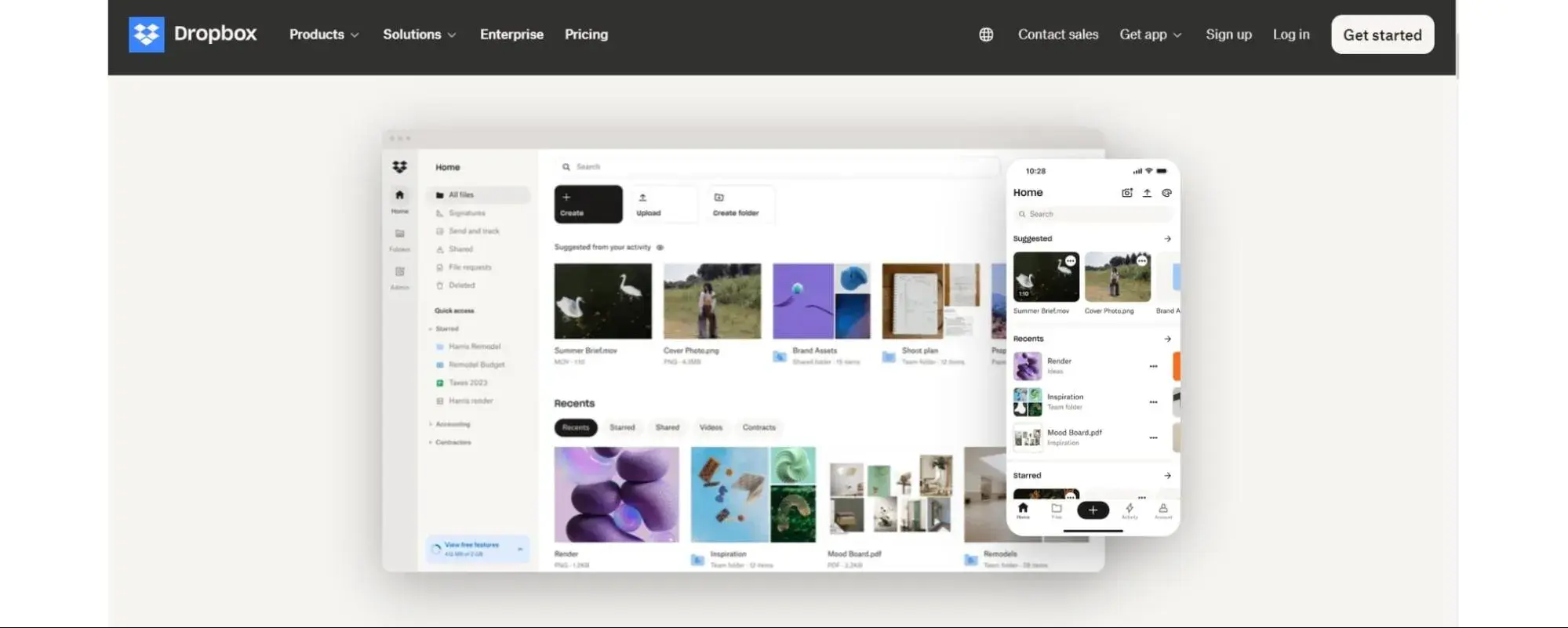
The first thing to know is that the free plan is very small at 2GB compared to 15GB in Google Photos, but as you scale up the pricing tiers you get both more storage and more security options.
To give you an idea, I uploaded a PDF that’s maybe 3 pages long. That’s already 33% of the 2GB storage — so the free version won’t be enough. But even the smaller price tiers quickly jump to terabytes of storage.
You can attach several devices to your DropBox account to back up your images comprehensively. Another nice feature they offer is the File Request:
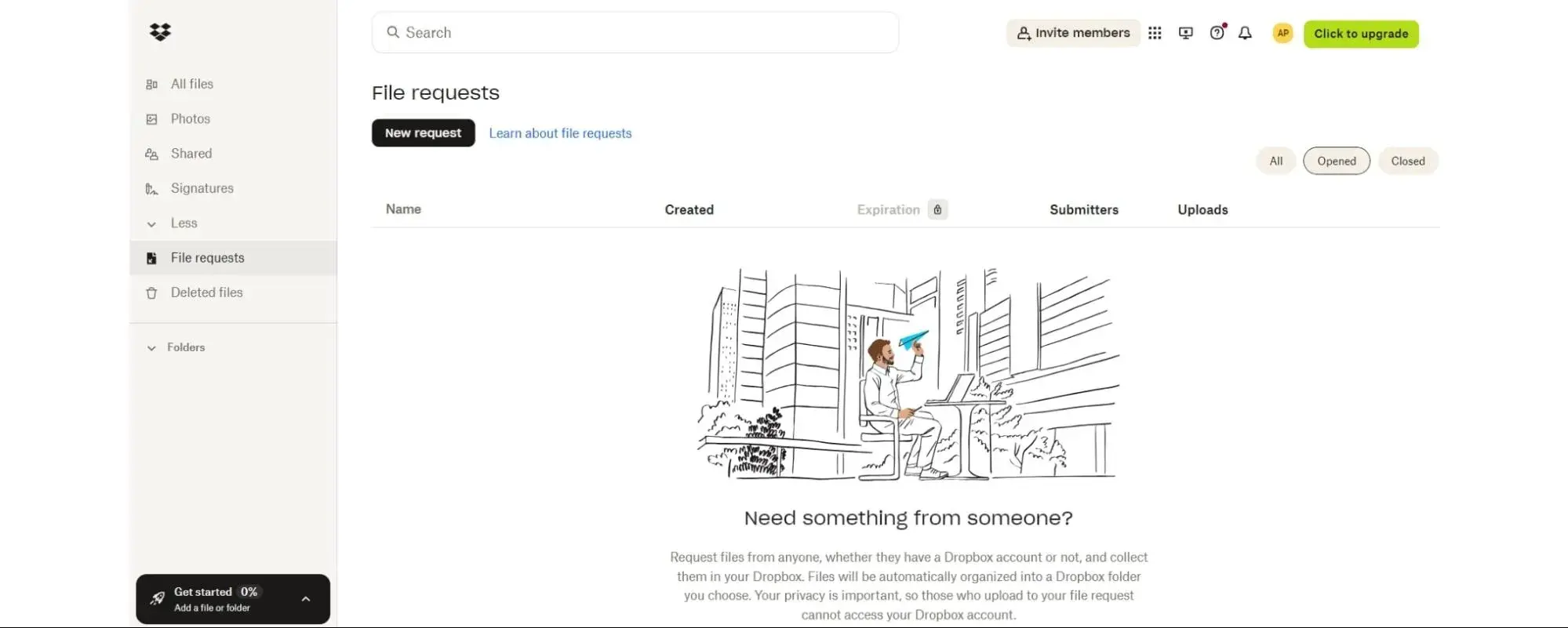
From within DropBox you can request a file from anyone — even if they are not members of DropBox — and if they honor your request, their file is uploaded into your DropBox account wherever you direct the file to go. You don’t have to fuss with downloading, uploading, and moving files around when they come in.
Pricing:
- Plus - $11.99/month for 2TB
- Essentials - $19.99/month for 3TB
- Business - $18 per user/month for 9TB
- Business Plus - $30 per user/month for 15TB
What I like: Hands down, this aesthetic is pleasing and attractive. It would be visually enjoyable to work in the spaces they’ve created.
3. SmugMug

Believe it or not, SmugMug and Flickr are brands both owned by a company called Awes.me, Inc. which ... actually does appear to be a pretty awesome group. If you’re into carbon-neutral businesses that are trying to make the world better as they get better at what they make, these are good options for you.
SmugMug is all about supporting photographers in their business endeavors. They aim to provide hosting and tools to help photographers store, sell, and succeed with their images. Both plans come with unlimited photo storage, a website, and sales tools.
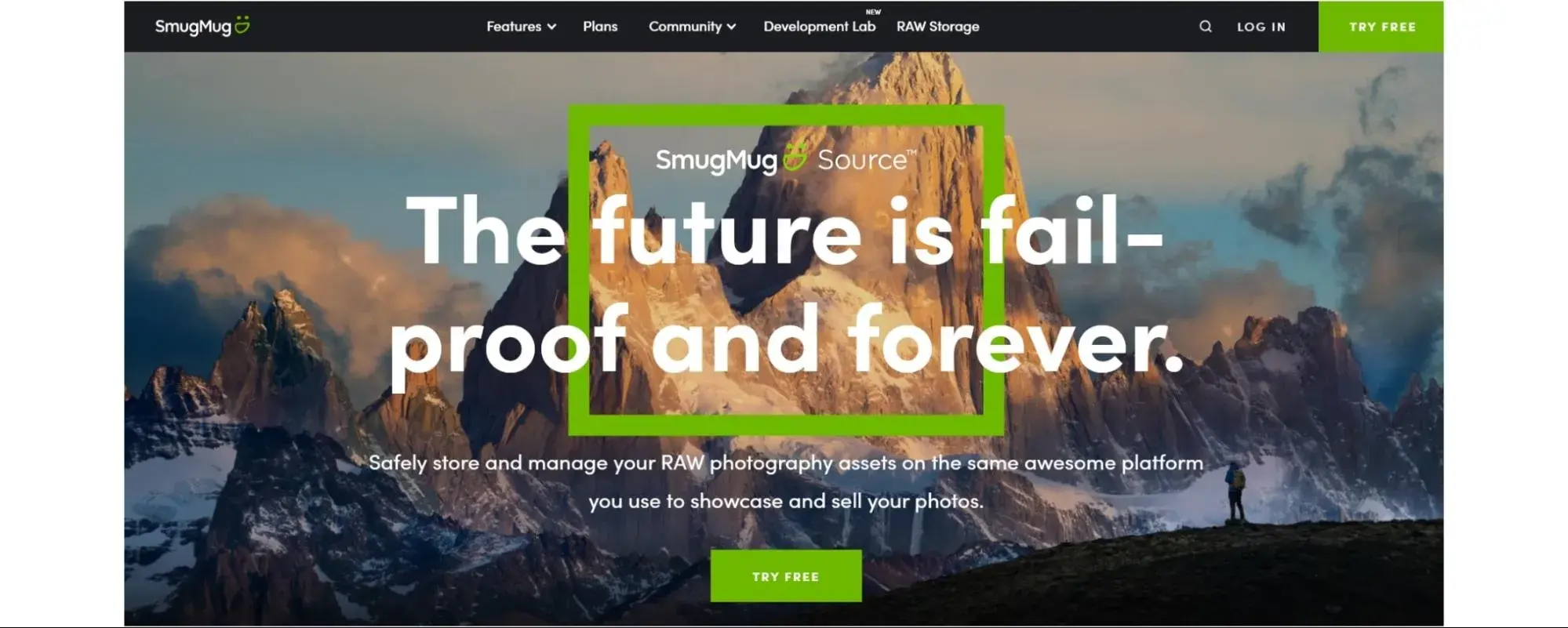
They have RAW file storage called SmugMug Source available at an additional cost for those who want it. Awes.me Inc. has a mission to help photographers keep their images safely stored for over 100 years. They want to address the historical nature of photos of human existence, finding ways we can digitally preserve visual history.
Pricing:
- Portfolio Plan - $31/month
- Pro Plan - $45/month
Best for: Photography professionals, particularly those with interests in conservation and carbon-neutrality.
4. Flickr
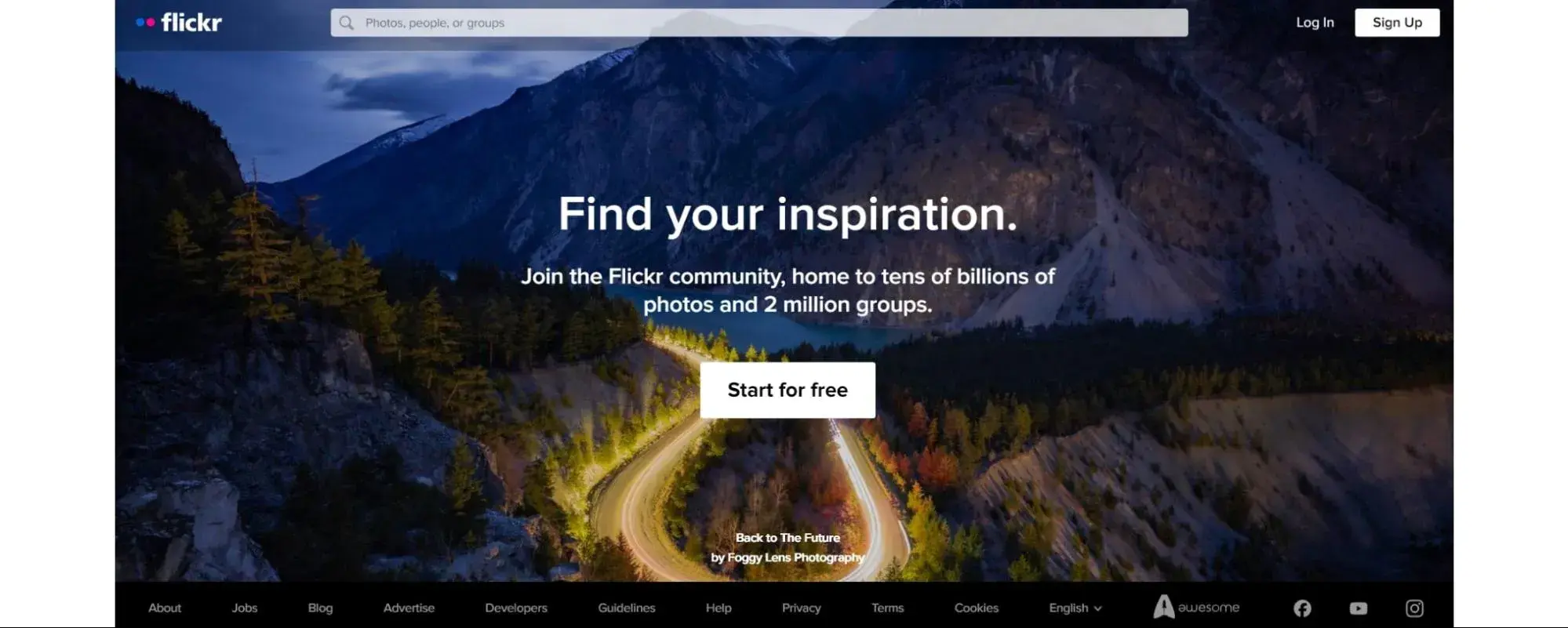
Another branch of Awes.me Inc., Flickr was one of the earliest photo-hosting and photo-sharing sites on the internet. It is primarily a community-focused image entity that hosts images and provides tools to add metadata to your images such as licensing info, tags, and locations.
They are all about creating new ways to organize and share your images and videos. The website has over 110 million registered users, and Flickr uses Amazon Web Services for hosting because that infrastructure includes over 1.5 million servers in over 100 locations.
It’s all backed by an API (application programming interface) where developers are encouraged to create add-ons, plug-ins, etc. so people can do more with their images, within more applications, and do so more and more easily over time.
Pricing: Flickr Pro - $9.49/month
Pro tip: The free experience includes ads, but once you start paying for the service you won’t have to see them anymore, and neither will those who visit your content.
5. Imgur

Oh, Imgur. It’s not for kids — it can be a bit cringy, a bit inappropriate — but they’ve been making the internet a bit more fun for chronically online teens and adults for decades. Sitting at #15 in the U.S. of the best websites on the whole dang internet, there’s more here than you could explore in a lifetime.
What you don’t want Imgur for is privacy. You upload to this host and your content is public, like, forever. But it’s great for businesses that go out of their way to make genuinely entertaining advertisements because you will have a lot of eyes on your work.
They, too, use Amazon Web Services for hosting because they had a hard time finding enough servers — at one time contracting with three different companies to back up the deluge of images rolling in daily from millions of users.
Pricing: Free!
Pro tip: Imgur gets so busy that uploading can be a bit slow during peak use times. They also do not do PSD or GIFV, so you’ll need to convert them before you get there.
6. Photobucket
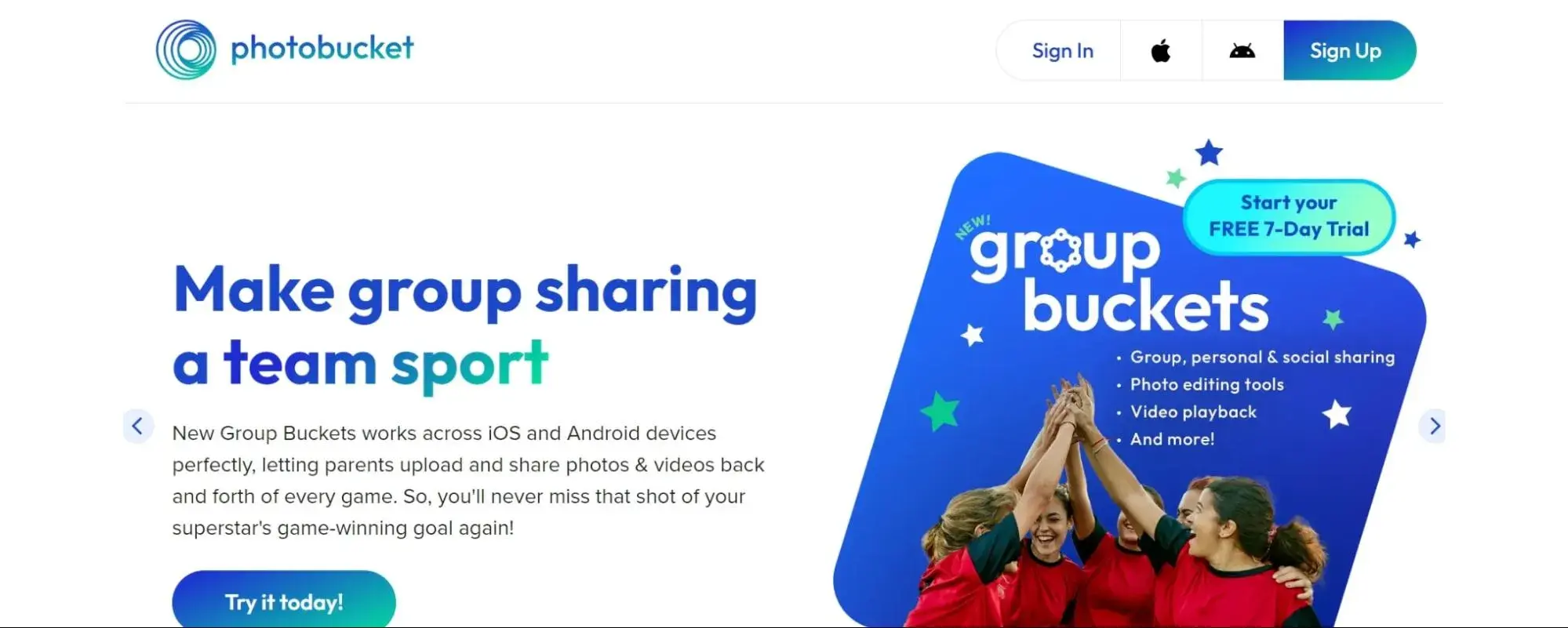
Photobucket stood out early in the market by offering editing and printing services for your hosted digital photos, making their name for being a website that offered everything you needed to go from data in a camera to a memory in a frame.
Photobucket has been around for a long time, and so has had some ups and downs — including a time when users complained because they couldn’t access their photos unless they upgraded their plans. Yet, it remains one of the most-used photo hosting websites at $13 per month to access image embedding.
It’s easy to use for beginners, teens, and most tech-literate kids. It includes photo editing within the app for users who don’t have separate editing software, and photo sharing is made simple by using one share link that works on iOS and Android devices.
Pricing:
- My Bucket - $5/month for 1TB
- Group Buckets - $8/month for 1TB + sharing
- Hosting - $13/month for embedded sharing
Best for: Photobucket is an affordable fit for people who primarily do a lot of photo-sharing but want to have access to hosting as well.
7. PhotoDeck
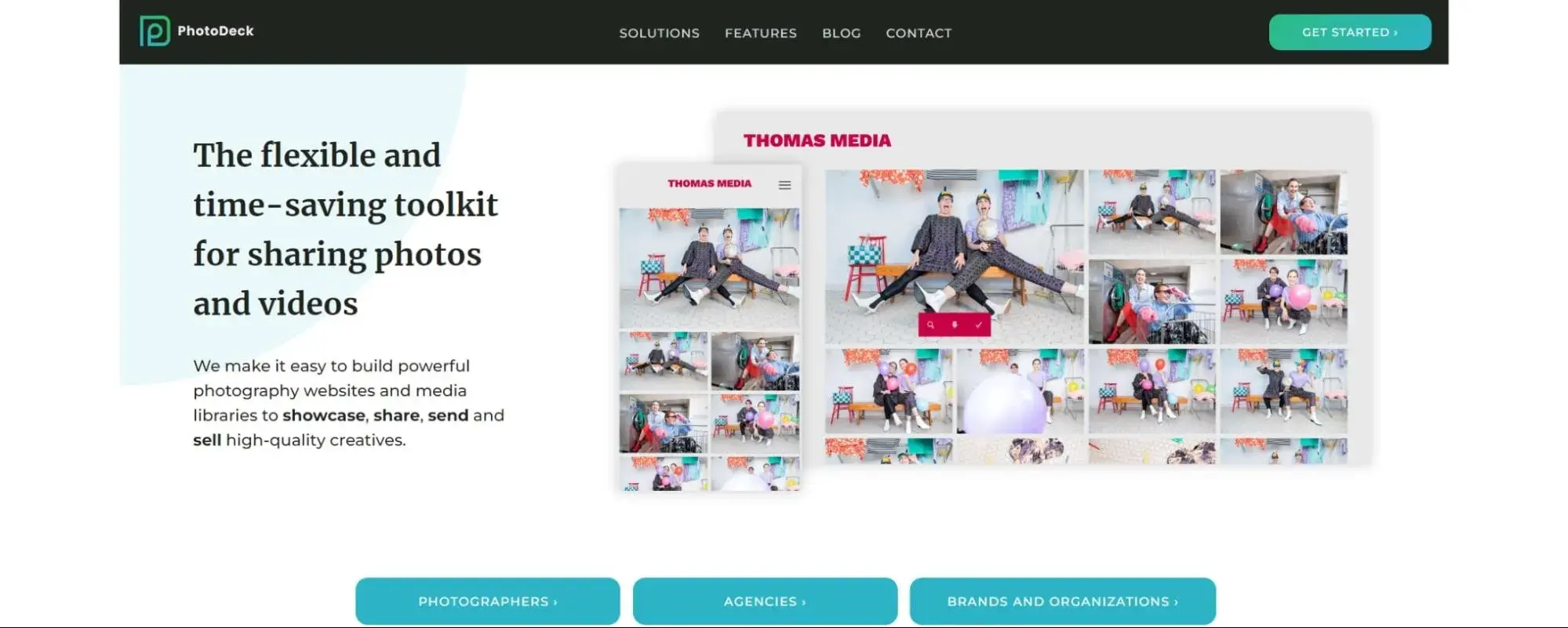
PhotoDeck is built for creative business ventures, and they offer their services without taking sales commissions — as compared to, say, Etsy, which nickels and dimes its sellers ad nauseum. Their offerings are robust, and anticipate many of the needs newer photographers will grow to need or wish for.
I, myself, am over the moon right now to discover a particular feature that uses AI to bypass a monotonous chore that sucks my life away when building product catalogs: tagging.
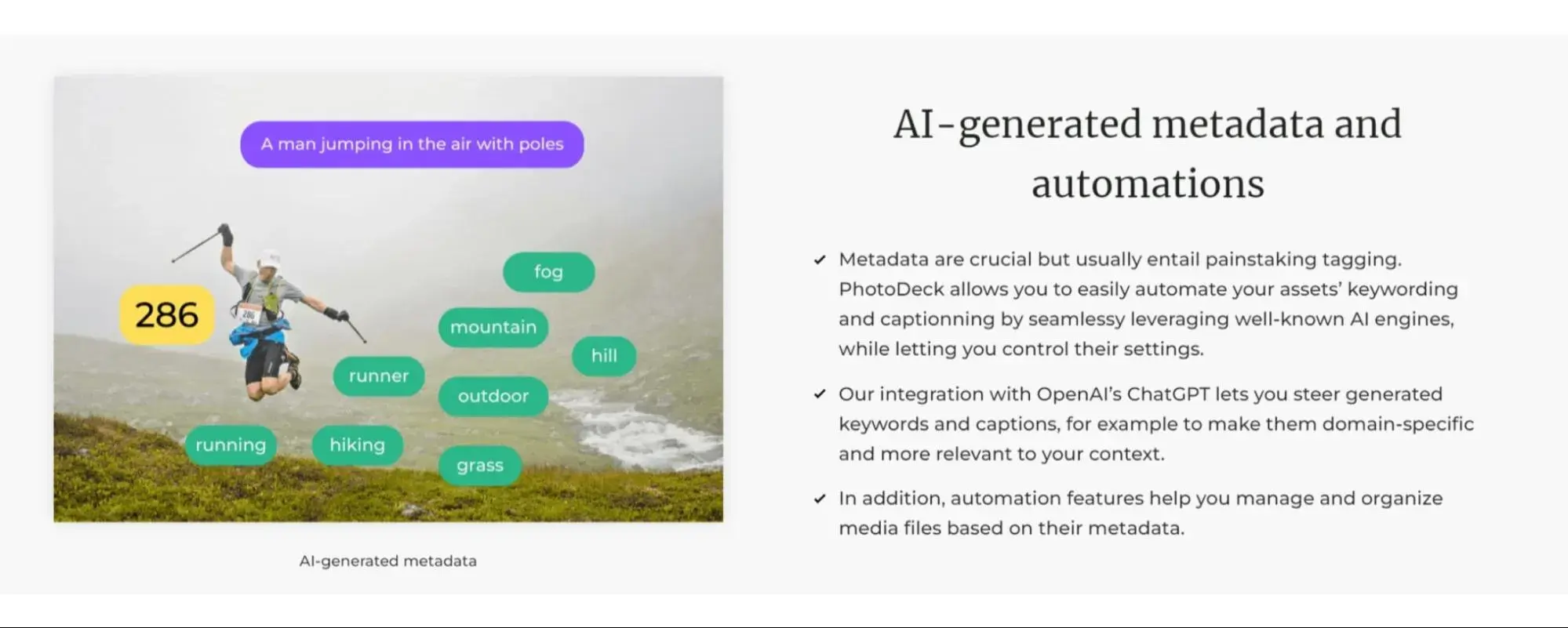
Be still, my beating heart. Here is something that I am delighted to let AI do.
Pricing:
- Essential - $12/month annually
- Standard - $25/month annually
- Business - $45/month annually
- Team - $100/month annually
- Brand - $100/month annually
What I like: Hosting is included at all price levels, they update their hosting services monthly, and they actively incorporate and manage redundancy to combat hardware issues. I appreciate them letting us know that they do all of that to address my nagging questions about, “but what if the server itself has an issue?”
8. Cloudinary

If you are a big company that is big on AI, so is Cloudinary. They offer a huge range of tools and automation capabilities to help major enterprises manage millions of photos and videos on platforms used across any number of industries. If omnichannel visual experiences are your goal and you want to be everywhere, this is for you.
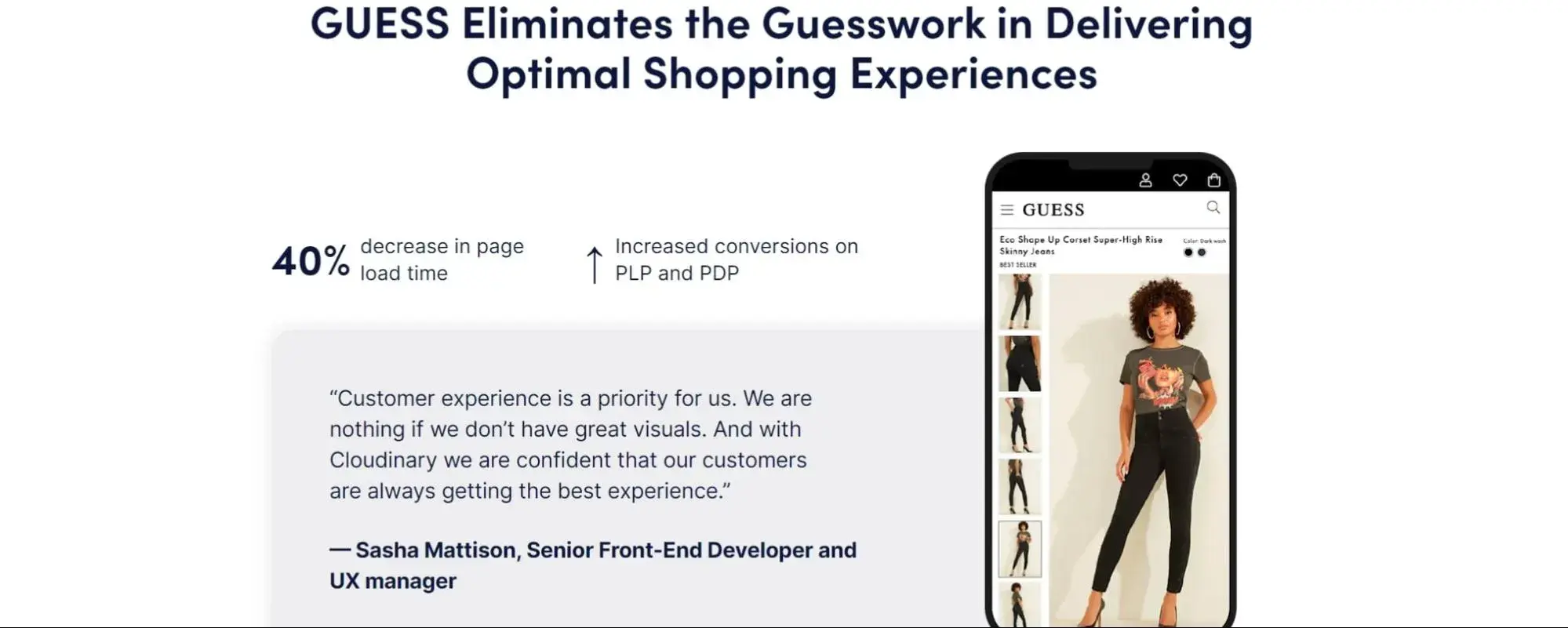
They help companies manage massive scale and volume while decreasing load times and increasing conversions, and isn’t that the dream? They also work hard with APIs to make sure that the tools are able to integrate and be both useful and flexible with any other program you’re using.
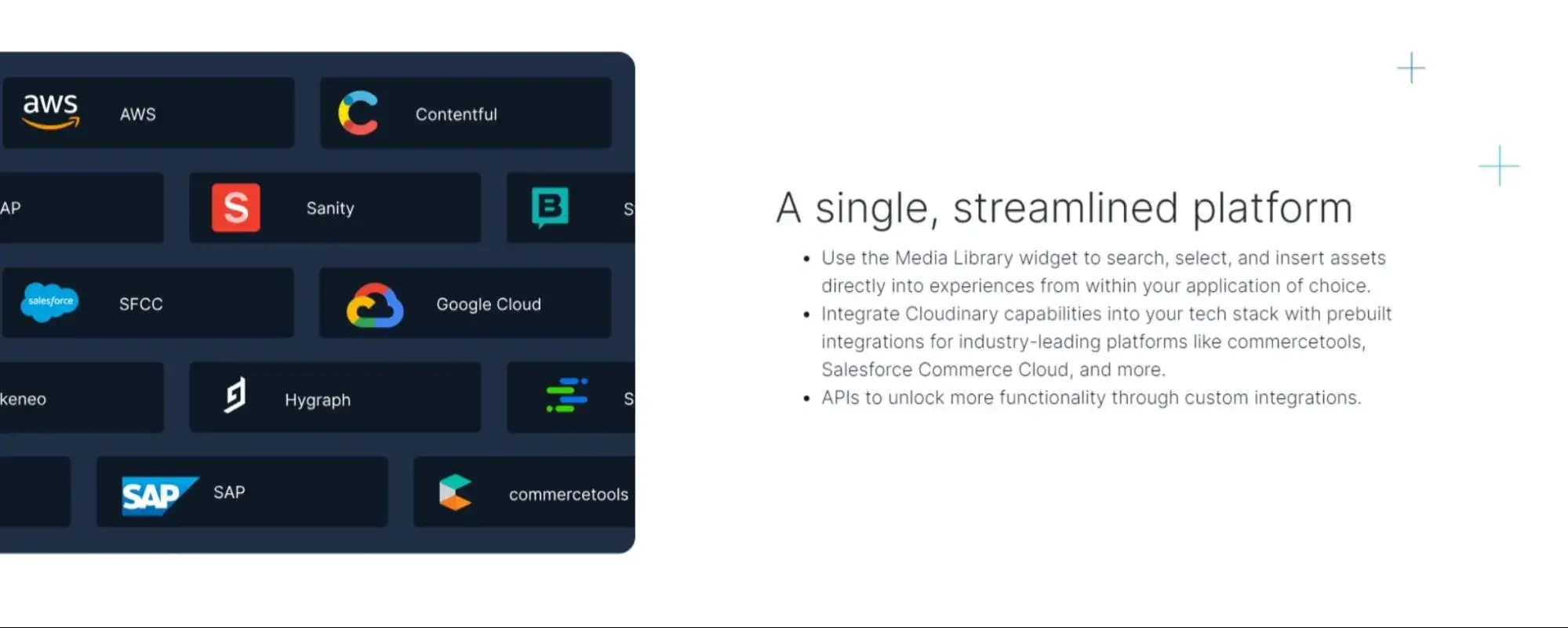
Pricing:
- Free - 25GB
- Enterprise - custom
Best for: Enterprise operations with budgets big enough to not worry about the fact that Cloudinary doesn’t tell us how much it costs. If you want to be at the forefront of visual experience technologies that are making billions in sales for some of the biggest brands in the world, consider working with Cloudinary.
Choosing an Image Hosting Website
So! If you were to ask me which image hosting website I’d be willing to put both my time and money into after all this research? I’d go with PhotoDeck — it has it all, and is forward-thinking. SmugMug would easily land close by in the number two spot for me. If I employed hundreds of people, though, big solutions like those at Cloudinary would be the pick.
So there you have it! Everything critical you needed to know about image hosting, and some choices to get started with. Good luck — and happy hosting.
Website Performance
.png?width=112&height=112&name=Image%20Hackathon%20%E2%80%93%20Vertical%20(50).png)

.png)





![7 Site Performance Challenges That Will Hold Businesses Back [Data + Expert Predictions]](https://53.fs1.hubspotusercontent-na1.net/hubfs/53/how-to-improve-lcp-1-20250121-126295.webp)



![19 Website Speed Optimization Strategies for 2024 [New Data]](https://53.fs1.hubspotusercontent-na1.net/hubfs/53/how-to-optimize-website-speed-1-20241203-1468927.webp)